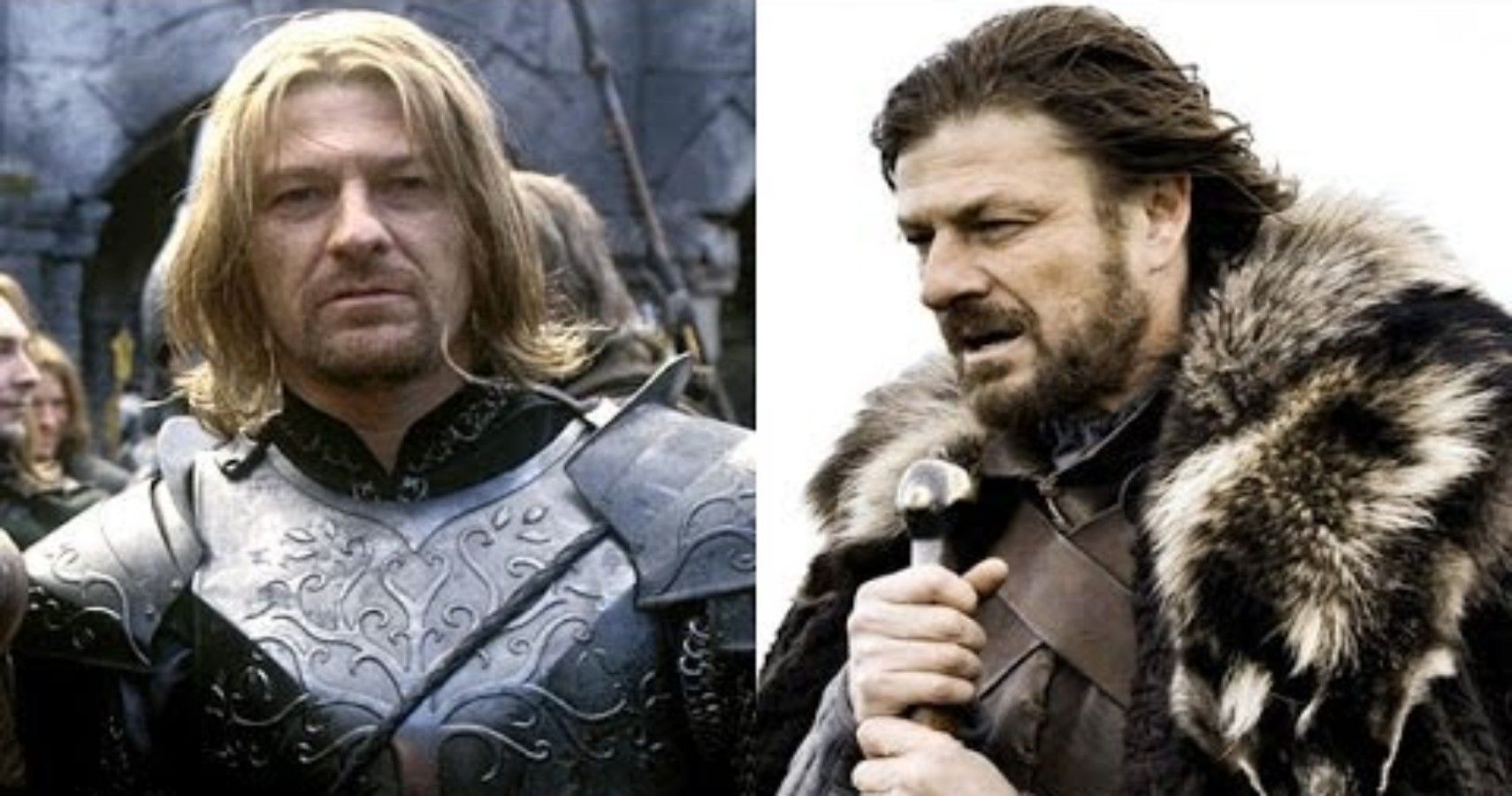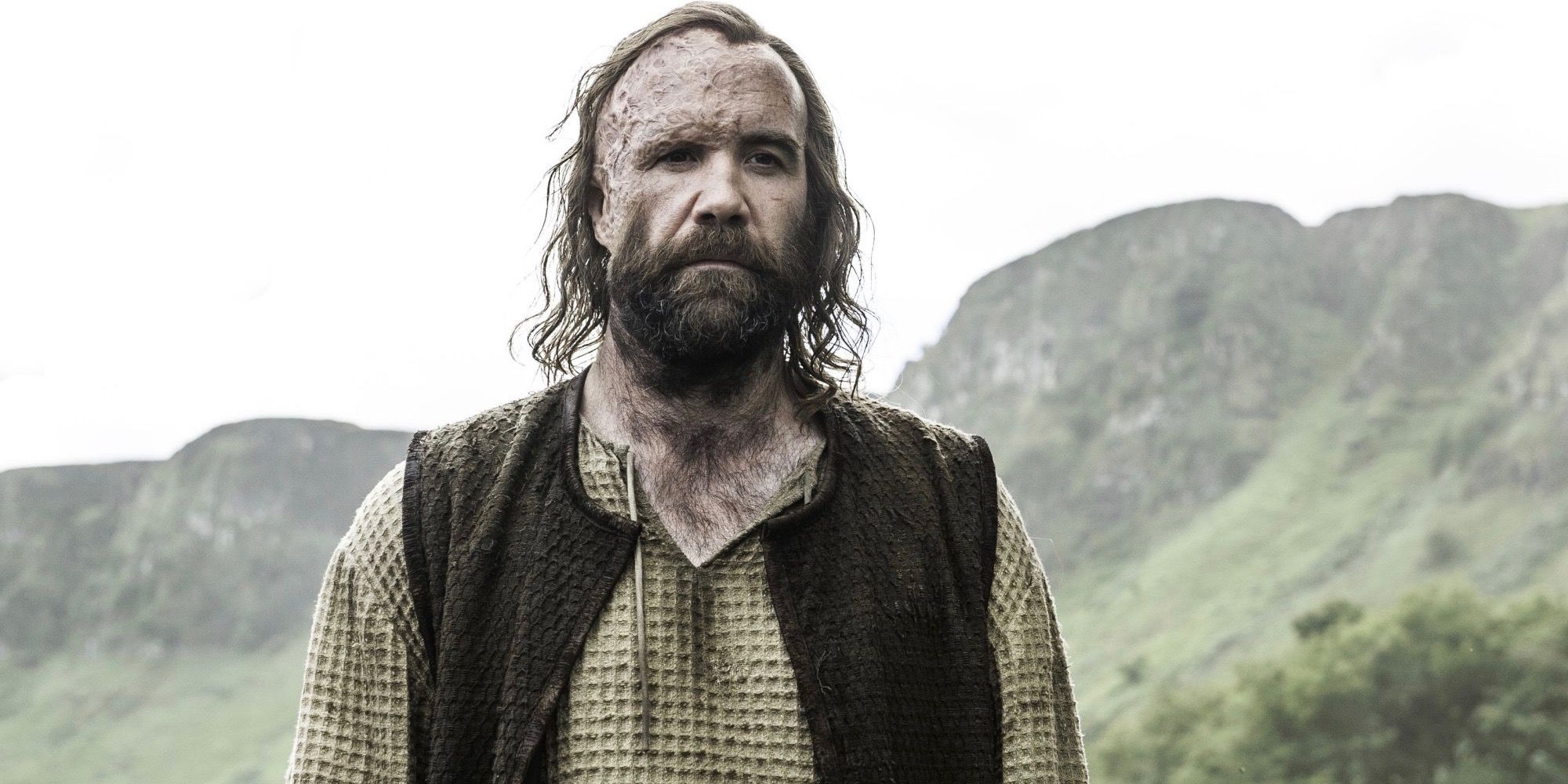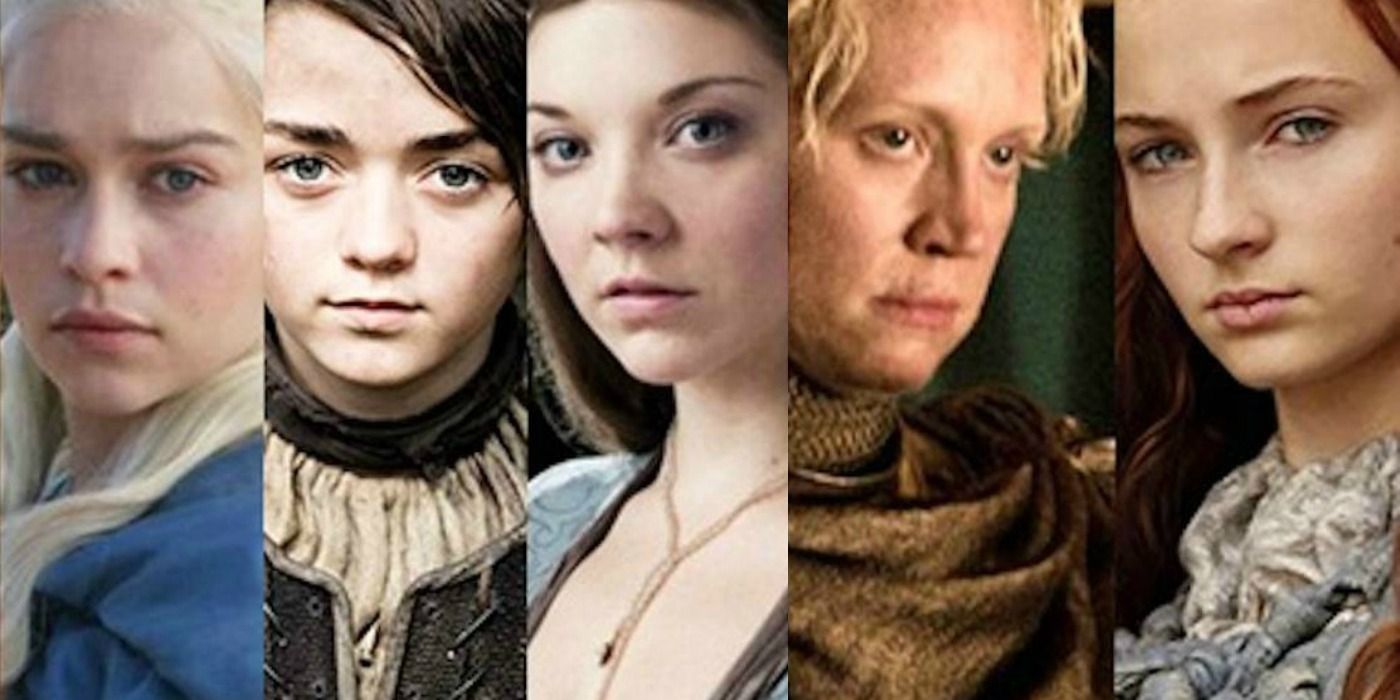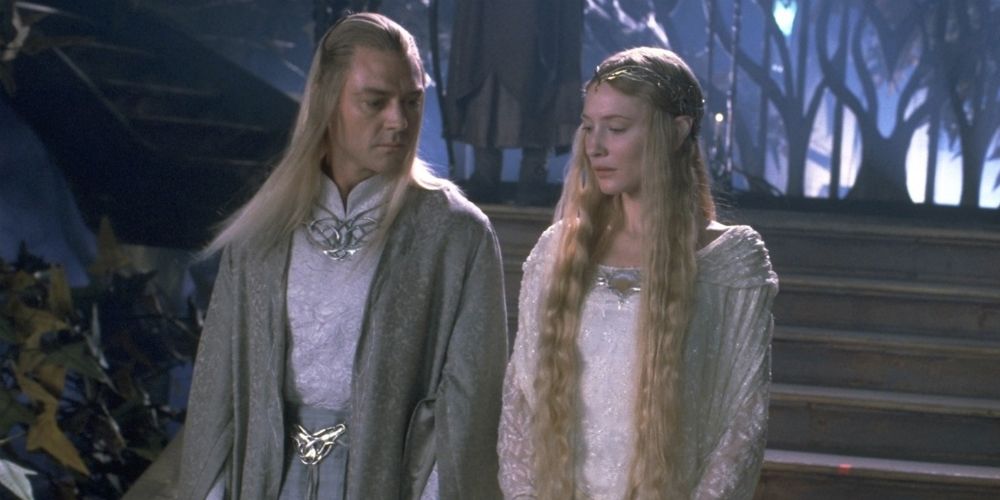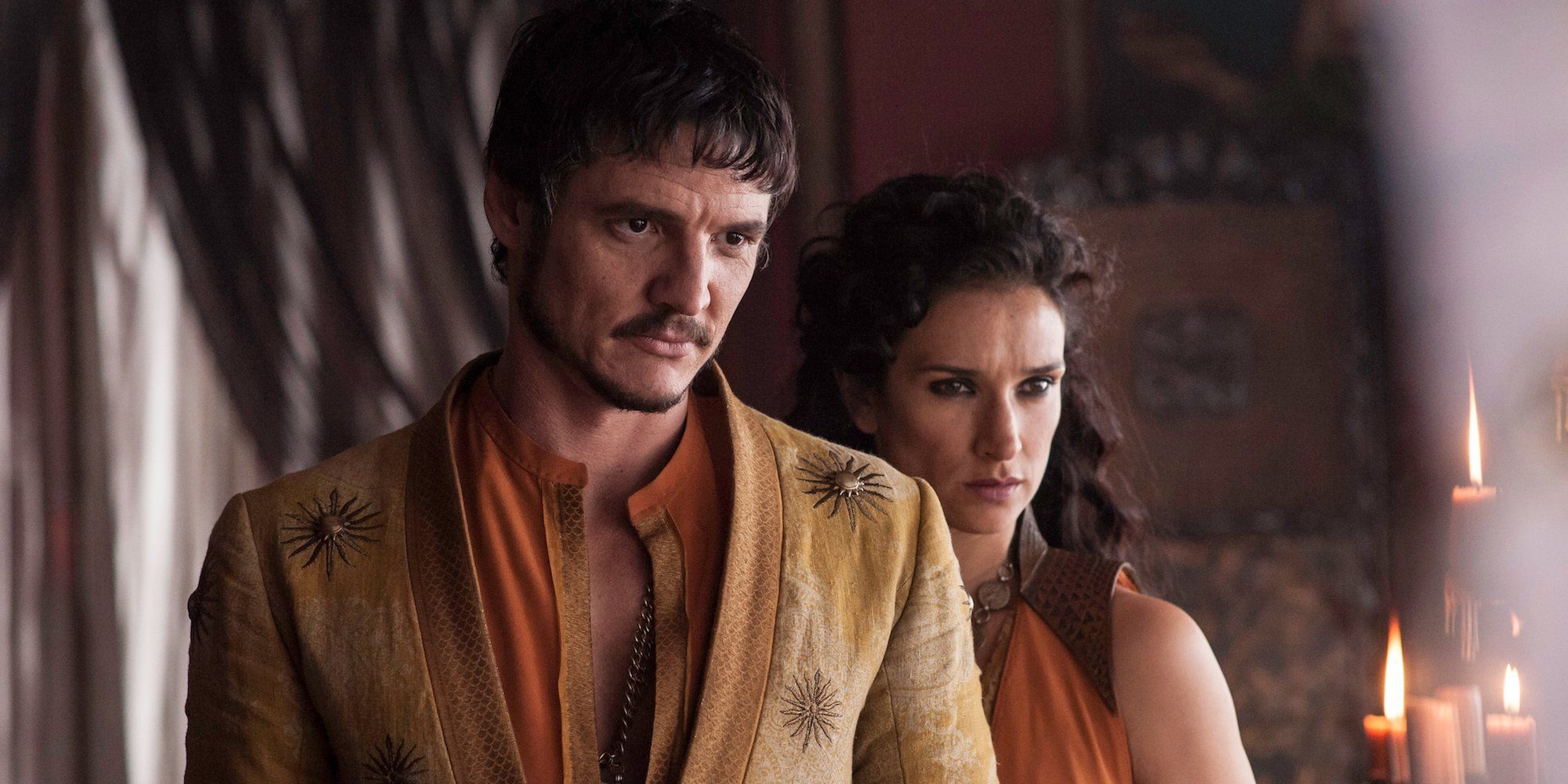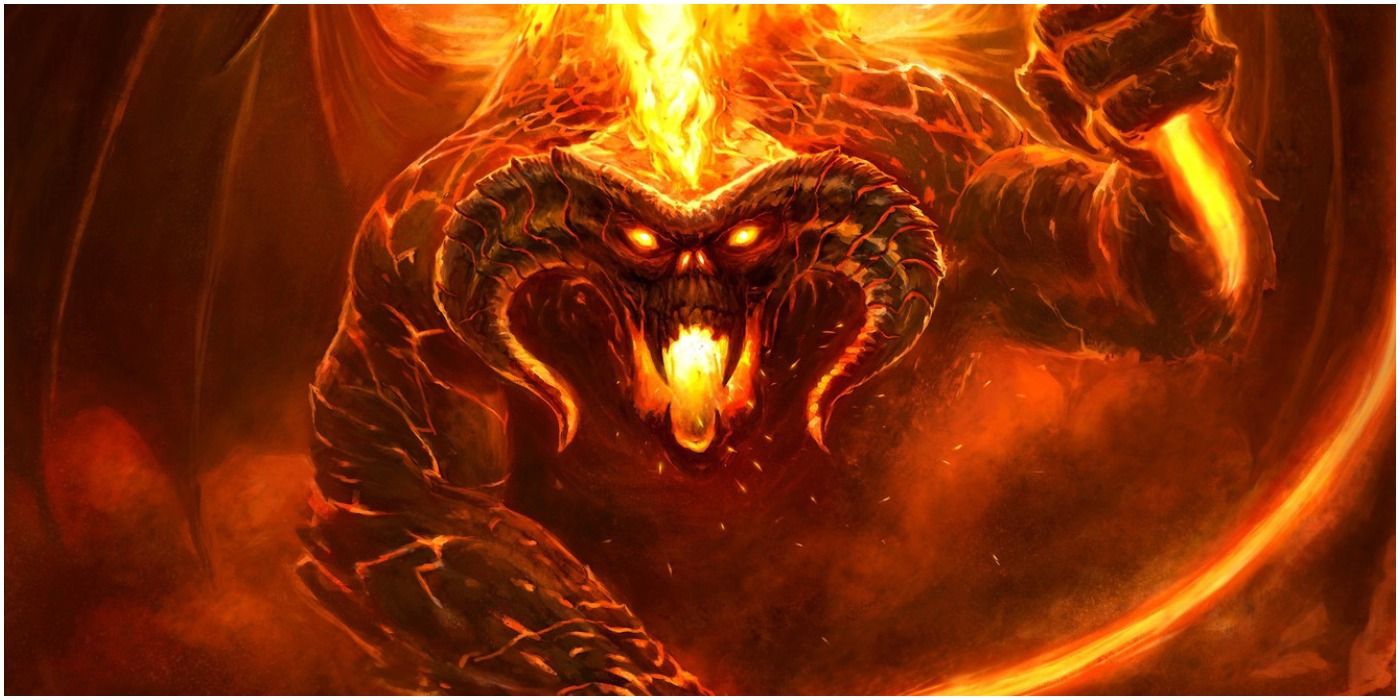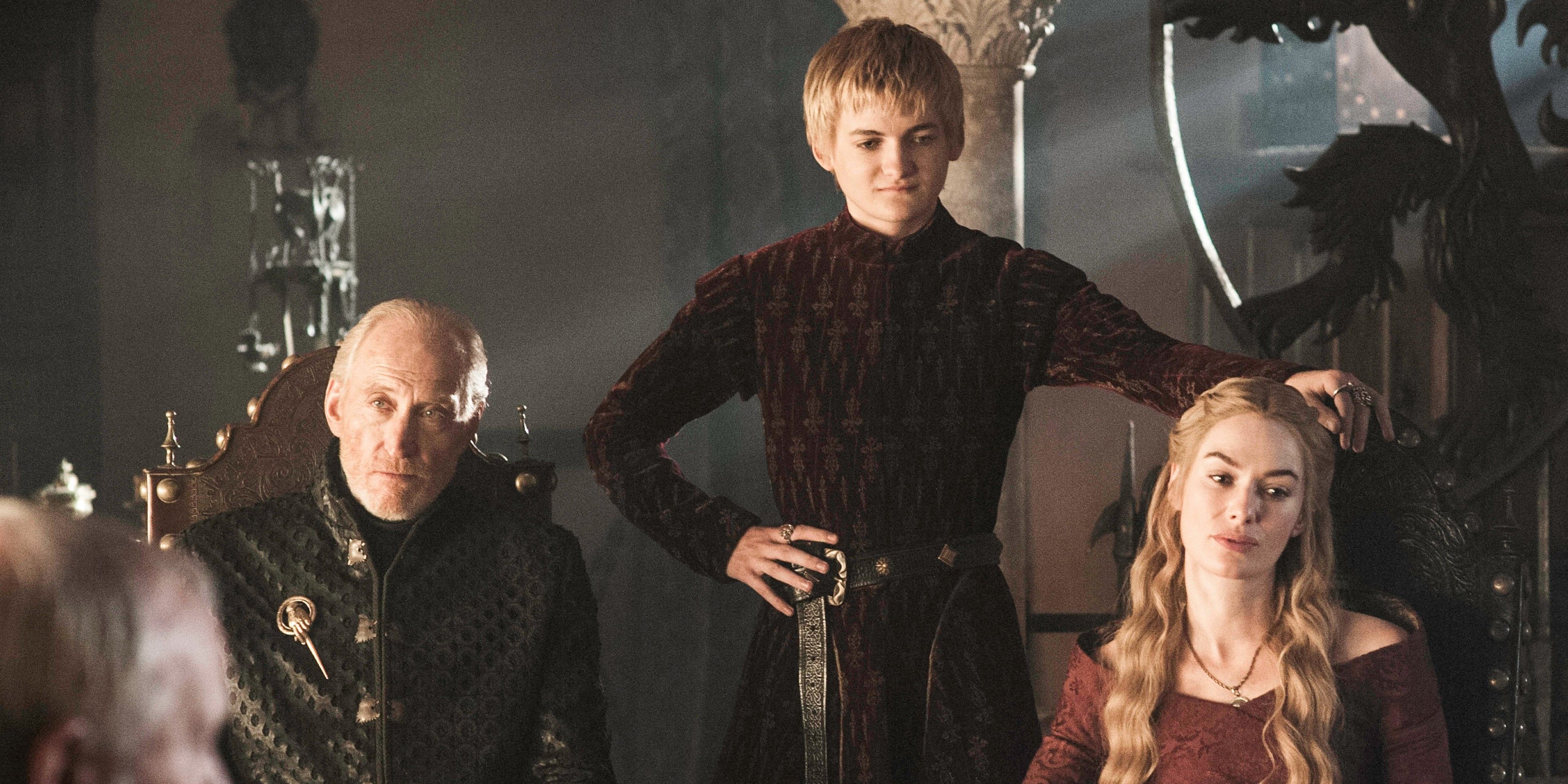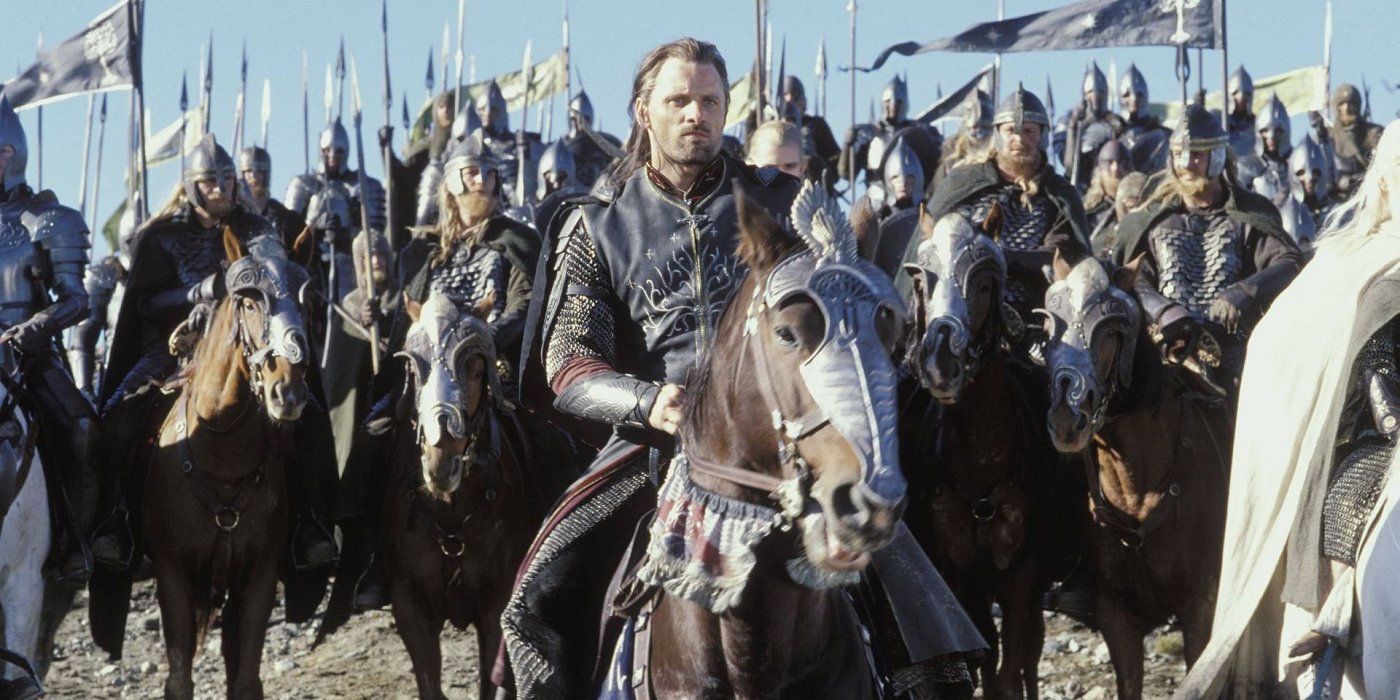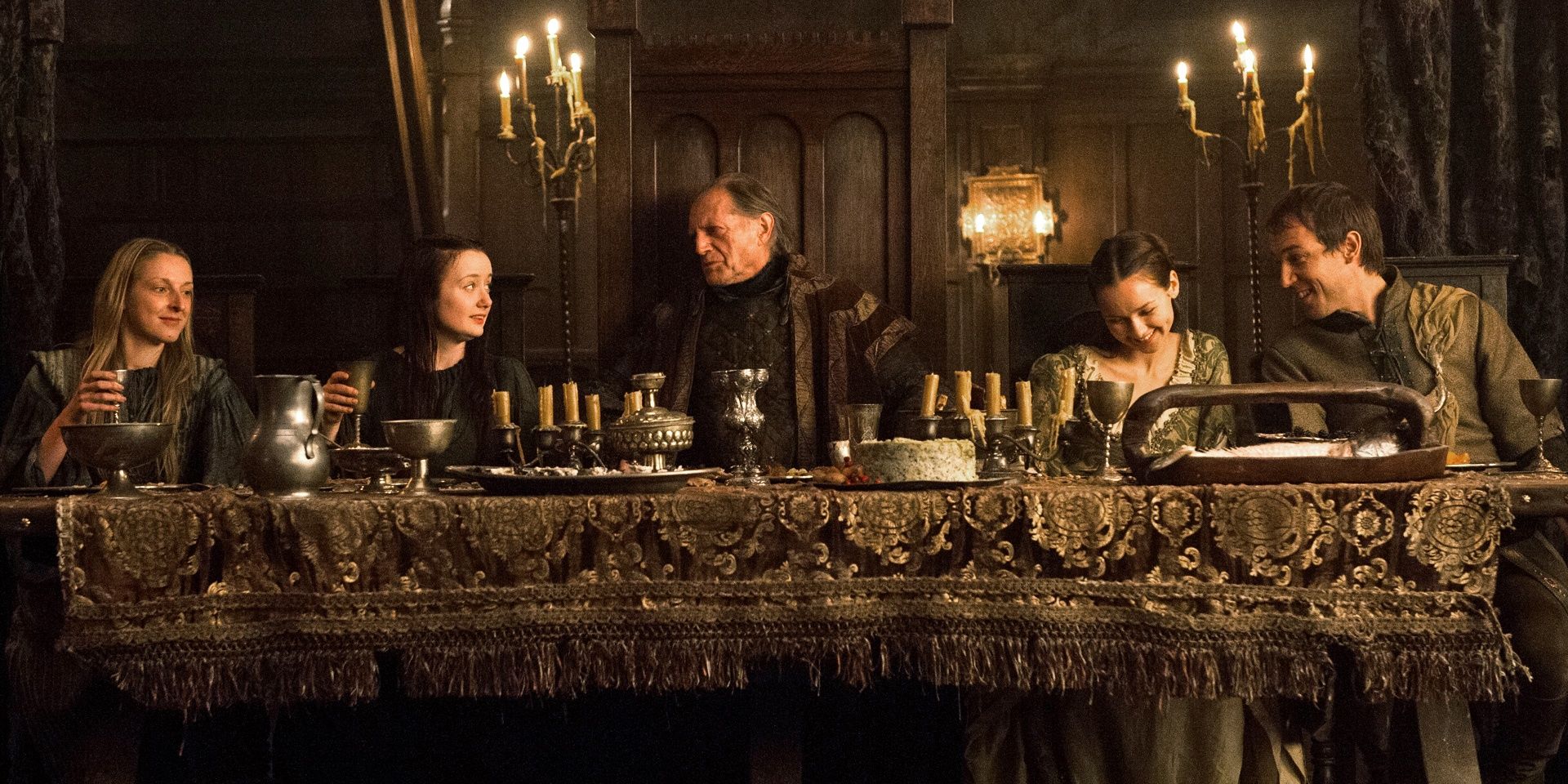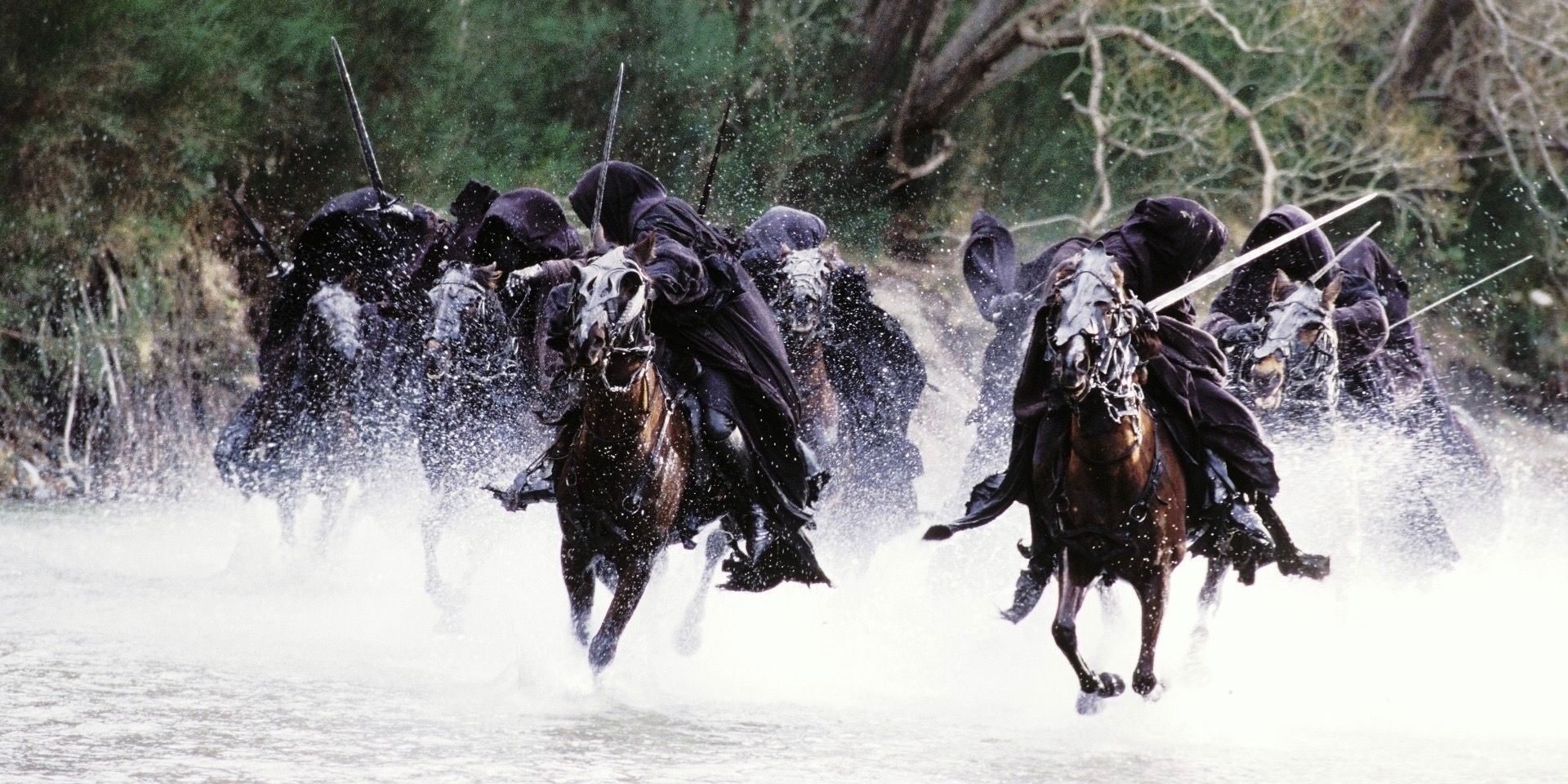Game of Thrones has been hailed as one of the greatest fantasy epics of recent years, with critical acclaim attributed to its striking similarities to another well-known series of films, Lord of the Rings. Peter Jackson's trilogy, based on J.R.R. Tolkien's fantasy novels, set the bar high for developing a world as rich in depth and grandeur as Middle-Earth. Indeed, the Seven Kingdoms in George R.R. Martin's books, upon which Game of Thrones is based, owe much to Tolkien's sense of world-building.
Both Game of Thrones and Lord of the Rings are based on the mercurial motions of medieval Europe, the undulating reigns of monarchs, the changing of dynasties as one usurped the other, and the people caught up in the wake of conflict. One added wintrous zombies and dragons, while the other populated its realms with elves, dwarves, and goblins. In many ways, Game of Thrones has improved upon concepts Lord of the Rings introduced, but in other ways, its a pale imitation.
GAME OF THRONES: REALISM
Game of Thrones takes its cues from the politics of medieval England and the violent confrontations they inevitably wrought, allowing for a gritty realism to the environment and characters of the show. Castles are dingy, armor is rusted, and perhaps most emphatically, language is not lofty.
Though Lord of the Rings manages to have some characters look begrimed at times (most notably Strider and Frodo as he succumbs to the One Ring's thrall), there is a sense of sterile purity to anyone that isn't an Orc. There would be no place for a figure like The Hound in the films, with his colorful language and purifying pessimism.
LORD OF THE RINGS: VISUALS
While the Lord of the Rings trilogy is made up of multi-million dollar blockbuster films, Game of Thrones was the most expensive series ever produced for television, with a whopping $15 million dollars going into every episode. That being said, Lord of the Rings wins for the most enchanting and dramatic visuals.
One shot of the Fellowship coming upon Rivendell beats any shot of King's Landing, and when it comes to showing the many different castles of the Race of Men, Lord of the Rings shows the depth of diversity with just Gondor and Rohan, in addition to the majesty and sprawl of the scale of The Shire.
GAME OF THRONES: STRONG FEMALE CHARACTERS
It's well known that author J. R. R. Tolkien, who was writing after WWI, didn't make it a point to have very many strong female characters in his novels - at least not as we would think of them today. Women feature in his novels, but they don't display traits like being assertive, intuitive, or commanding.
By contrast, Game of Thrones is filled with a variety of strong female characters, who are both strong physically as well as in their characterizations. Women like Daenerys, Arya, Sansa, Cersei, and Brienne all convey different types of strength, and their stories are some of the most compelling in the entire series.
LORD OF THE RINGS: COSTUMES
While both Game of Thrones and Lord of the Rings take place in medieval fantasy settings, with wardrobes that reflect their environments, Lord of the Rings places a great deal of importance on the narrative part its costumes have to play. Every stitch of cloth has purpose and impacts the story.
Costume designers had to discover ways to make every Elven race appear distinct, as well as give history and artistry to every Dwarven sword and shield. Even certain articles of clothing, like Gandalf The White's undergarments (which would never be seen on film) were hand-stitched with particular Elven embroidery to convey his special relationship with Galadriel's people.
GAME OF THRONES: DIVERSITY
Peter Jackson has been criticized for not populating his fantasy films with a diverse cast of characters. Men, dwarves, elves, wizards and so on are all Caucasian, despite geography based on Europe, whereas J.R.R. Tolkien wrote such races in Lord of the Rings to be properly ambiguous, especially considering they are supposed to predate historical record on Earth.
Game of Thrones, with locations like Westeros, Dorn, and Braavos, is shown to have characters that represent a broad spectrum of individuals. There aren't any specific characters like Orcs or Uruk-Hai who could be mistaken for people of color and thought to be depicted in a negative light.
LORD OF THE RINGS: FANTASY
Lord of the Rings is a high fantasy epic that has come to define the way the genre is depicted. Game of Thrones owes much of its current appeal to the massive popularity of Lord of the Rings and the way it made fantasy into reality. From the Balrog, to the Eagles, to the Eye of Sauron, everything about it transports fans to a world of magic.
Game of Thrones features some fantastical elements, like White Walkers and Dire Wolves, but most of its sense of fantasy comes from its dragons. They appear half way through the series after having been touted for several episodes, but are mainly used as weaponized beasts of war.
GAME OF THRONES: CHARACTER PERFORMANCES
Due to its length, Game of Thrones allows fans to follow the trajectories of numerous characters and share in their struggles and triumphs. The righteous are shown to be fallible, and evil individuals are shown to be capable of acts of compassion. The characters are therefore more relatable as well as dynamic.
In Lord of the Rings, many of the characters are shown to be mostly good or evil, with a few notable exceptions. J.R.R. Tolkien didn't write very many complicated characters, often providing just enough detail so that readers could use their own imagination. Therefore, most of the enjoyment of the films came from the acting performances.
LORD OF THE RINGS: BATTLES
If action, adventure, and excitement are what you crave in a fantasy story, Lord of the Rings provides the most epic battles there are. The ranks of good versus the legions of evil, with the races of men, dwarves, elves, and a few hobbits fighting against hordes of orcs, uruk-hai, goblins, and ringwraiths.
Game of Thrones was able to provide some consistently exciting battles in its later seasons, but they couldn't match the scale of Lord of the Rings. The Battle of Minas Tirith and the Battle for Helms Deep fluctuated between enormous shots to show scale, and tight ones to show desperation, making epic battles feel intimate and the stakes high.
GAME OF THRONES: WORLD-BUILDING
HBO had a Herculean task showing the breadth of George R. R. Martin's fictional world with Game of Thrones, primarily because scale needed to be conveyed as well as small details. Every environment and location in the series, from the Iron Islands to King's Landing, had its own economy, political system, and sense of architecture.
Unlike Lord of the Rings, religious and cultural practices are shown in great detail, imbuing the series with a rich depth that feels authentic and genuine. There is also a deep sense of recorded history among the inhabitants of the different continents, which adds to the sincerity.
LORD OF THE RINGS: MUSIC
The incredible scores by Howard Shore for each of the Lord of the Rings films, as well as the gorgeous and haunting melodies of individual artists who lent their vocal talents to their tracks, created a soundscape experience that is the pinnacle of achievement in cinema.
Ramin Djawadi succeeded in creating a memorable theme for Game of Thrones, as well as some recognizable personal character themes, but none of them are as dramatic as Shore's scores. They are more nuanced and supportive of the framework of the scenes, rather than driving the narrative.

